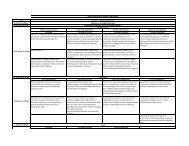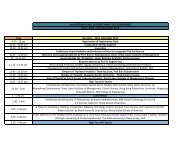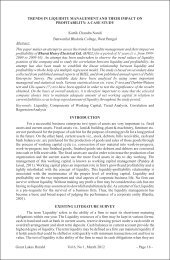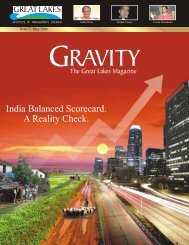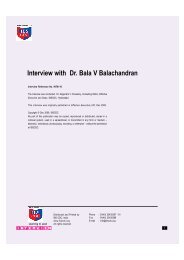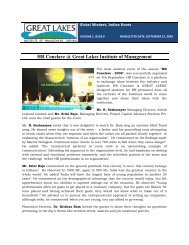Comparative Analysis of Indian Stock Market with ... - Great Lakes
Comparative Analysis of Indian Stock Market with ... - Great Lakes
Comparative Analysis of Indian Stock Market with ... - Great Lakes
Create successful ePaper yourself
Turn your PDF publications into a flip-book with our unique Google optimized e-Paper software.
magnitude <strong>of</strong> that movement as a result <strong>of</strong> reacting to global cues varies and, to that limited<br />
extent <strong>of</strong> variation, the global diversification strategy can prove useful. In short, the<br />
‘transaction cost’ for investment is coming down as is ‘informational cost’.<br />
67<br />
Qualitatively, the comparison showed that <strong>Indian</strong> stock exchange has the governance<br />
system and an efficient mechanism in place to be a world class institute, specially the<br />
requirements <strong>of</strong> Clause 49 promulgated by SEBI and the advanced trading and settlement<br />
mechanism <strong>of</strong> NSE, respectively. However, unfortunately our implementation <strong>of</strong> the same<br />
remains a problem area <strong>with</strong> almost 15-20% <strong>of</strong> the listed companies yet to align their<br />
operations as required under the law.<br />
Moreover, there are also issues regarding the extent to which the sophisticated systems <strong>of</strong><br />
the stock exchanges (NSE, BSE) are utilized in terms <strong>of</strong> the volume and frequency <strong>of</strong><br />
transactions and the range <strong>of</strong> instruments traded. The commodity segment, derivatives and<br />
such other segments are yet to see activities like the equity segment <strong>of</strong> the market. The<br />
reasons that can be attributed to this is the fact that it has been only 5 years (derivatives<br />
started in 2000) that the various segments, apart from equity and debt, have started operating<br />
and hence it is reasonably nascent compared to its global counterparts. It would, therefore,<br />
not be unjustified to say that the system is still evolving and it would take some time not only<br />
to attain efficiency <strong>of</strong> operation, but also to generate increased interest and awareness about<br />
the various other segments <strong>of</strong> the market. Then only can we expect the operations to match its<br />
global counterparts in terms <strong>of</strong> volumes, frequency and variety <strong>of</strong> instruments traded.<br />
One more reason that can be attributed for the lag between a global benchmark like NYSE<br />
and BSE or NSE can be the fact that, in our country, listing <strong>of</strong> foreign companies are still not<br />
allowed on the lines <strong>of</strong> ADRs or GDRs. This can be due to lack <strong>of</strong> depth and breadth <strong>of</strong> the<br />
market. Again, as this study points out, the listing criteria differ in terms <strong>of</strong> size as well as<br />
their disclosure norms. This implies that the depth <strong>of</strong> the market judged by the total<br />
capitalization is less for the <strong>Indian</strong> markets compared to its counterparts. Moreover, the<br />
disclosure norms affect the governance aspect as also the information availability.<br />
Innovative financial instruments like CAT Bonds, or dealing in Junk Bonds as a cheap<br />
source <strong>of</strong> finance or sophisticated derivative instruments are yet to catch up in our country.<br />
This is partly because <strong>of</strong> the regulations that are gradually being eased out and also due to the<br />
risk appetite <strong>of</strong> the investors in this country. The opening up <strong>of</strong> the economy and its<br />
subsequent impact on the financial sector has only started barely in the last six years and,<br />
hence, the ‘teething problems’ <strong>of</strong> initial skepticism, lack <strong>of</strong> awareness and interest exist,<br />
besides cautious approach towards bringing about changes <strong>with</strong> keenly monitored impact <strong>of</strong><br />
those changes.<br />
If we go to the specifics, then we find that the Clause 49, our counterpart <strong>of</strong> the famed<br />
Sarbannes-Oxley Act <strong>of</strong> USA, has brought us to the global standards. But, because <strong>of</strong> the early<br />
©<strong>Great</strong> <strong>Lakes</strong> Herald – April 2007 Volume 1, Issue 1 by <strong>Great</strong> <strong>Lakes</strong> Institute <strong>of</strong> Management, Chennai






